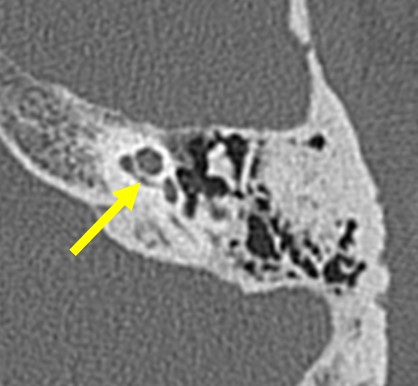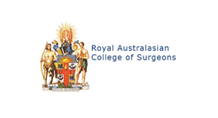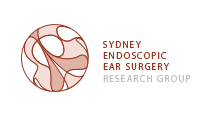Otosclerosis
In otosclerosis, excessive bony growth occurs around the third middle ear bone (stapes or stirrup), which normally conducts the sound to the cochlea.
What is Otosclerosis?
Sound normally travels through the ear canal, vibrates the ear drum, which vibrates the three ear bones and delivers sound to the inner ear (cochlea). In otosclerosis, excessive bony growth occurs around the third middle ear bone (stapes or stirrup), which normally conducts the sound to the cochlea.
The overgrowth interferes with the motion of the stapes and its interaction with the inner ear fluid, and causes conductive hearing loss. This stapedial otosclerosis is correctable by surgery. In some patients whose bony overgrowth extends to the inner ear (cochlea otosclerosis), sensorineural hearing loss occurs also.
Otosclerosis has a hereditary component, but can skip generations. As such, you may not have any recent or immediate family members with the condition.
Left Stapedectomy for Otosclerosis
Dr Nirmal Patel (Associate Professor of Surgery) performs a stapedotomy. Stapedectomy / stapedotomy is the surgery performed for the condition called otosclerosis (a common cause of hearing loss in the younger patient).
For more stapedectomy operation videos. This video is provided as an educational resource only.
- Endoscopic Stapedectomy: Collective Experience From a Large Australian Center
- The Endoscopic Relationship of the Stapedius Muscle to the Facial Nerve
- Micro-CT analysis of the anatomical characteristics of the stapedial annular ligament
- X-ray microtomography study of otic capsule deficiencies: three-dimensional modelling of the fissula ante fenestram
Video by Associate Professor Nirmal Patel.
Additional information
Do I Have Stapedial (Fenestral) or Cochlear Otosclerosis?
How Can My Otosclerosis Be Treated?
Medical Therapy for Otosclerosis
When there is a sensorineural (nerve) component to the patient’s hearing loss with otosclerosis, or if there is unexplained nerve hearing loss and a family history of otosclerosis then medical therapies may be indicated. Normal Left Cochlea
Normal Left Cochlea
 Cochlear Otosclerosis Left Ear - note the loss of bone
Two main classes of medicines are currently recommended:
Sodium Floride
In the active phase of the disease (otospongiosis), sodium floride theoretically enters the abnormal bone in the ear and arrests the disease progression in 70-80% of patients. These medicines are not recommended in children, if pregnant or breast feeding. Always follow the directions of your chemist when taking these medicines and read the drug interaction and side effect profile carefully to understand the risks in your own case.
Medicine names:
Florical equivalent to 8.75 mg Sodium Floride.
Fluotic
Your chemist may be able to compound 20mg of sodium floride as well.
Side effects of Sodium Floride include but are not limited to:
Cochlear Otosclerosis Left Ear - note the loss of bone
Two main classes of medicines are currently recommended:
Sodium Floride
In the active phase of the disease (otospongiosis), sodium floride theoretically enters the abnormal bone in the ear and arrests the disease progression in 70-80% of patients. These medicines are not recommended in children, if pregnant or breast feeding. Always follow the directions of your chemist when taking these medicines and read the drug interaction and side effect profile carefully to understand the risks in your own case.
Medicine names:
Florical equivalent to 8.75 mg Sodium Floride.
Fluotic
Your chemist may be able to compound 20mg of sodium floride as well.
Side effects of Sodium Floride include but are not limited to:
- Skin rash
- Oral ulceration and teeth discoloration
- Nausea, vomiting, decreased appetite
- Constipation
- Maybe increased risk of kidney/ bladder stones
- Nausea, abdominal discomfort, stomach and oesophageal inflammation
- Bone, joint or musculoskeletal pain
- Skin inflammation – rashes etc.
- Eye inflammation
- Abnormal heart rhythms (AF)
- Jaw inflammation and ulceration (osteoradionecrosis)
- Thigh bone fractures (very rare)
- Cancer of the oesophagus (very rare)
Surgical
For patients with stapedial otosclerosis, surgery known as a stapedectomy may be recommended. This surgery is performed through the ear canal, however an incision behind or anterior to the ear may be made to remove muscle tissue to use in the operation. The operation can be performed under either general or local anaesthesia, and is usually a day surgery procedure with no overnight hospital stay required. Stapedectomy has a 90% success rate in permanently restoring hearing. In a stapedectomy, your surgeon uses high power magnification to precisely turn the eardrum membrane forward, and remove the stapes either partially or completely. Surgical instruments, a wire or laser may be used to remove the stapes, which is them replaced with a prosthetic bone. The eardrum membrane is then repositioned. With a prosthetic stapes bone, sound vibrations can pass normally from the tympanic membrane (eardrum) to the inner ear fluid. There is usually no further need for surgery. Around 3 to 4 days off school or work will be needed for recovery. Patients will need somebody to take them home from the hospital, and can travel by plane 2 weeks after surgery.How Soon Will My Hearing Improve Following Stapedectomy?
Other Services
Other Services
Still have a question?
Our team will be happy to answer any questions you may have about Otosclerosis.







